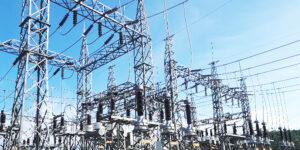
It now feels like nobody saw her coming.
Late Thursday night, Super Typhoon Odette (International name Rai) hit our island with a fury that many of us have not seen in years. From around 10pm to 2am the following day, I don’t think many adults got any sleep, fearful for their roofs and everything that was not securely tied down as powerful gusts rocked our homes and the awesome power of nature tore through the land.
Odette’s approach had knocked out power, which was already expected given that Typhoon Signal number 4 had been raised in the early hours of the evening. What most of us didn’t expect was the sheer power of the typhoon.
When Odette was done, most of Negros Island had lost power due to the many fallen trees and electric posts. Many homes and buildings sustained damage from the strong winds that toppled trees or swept away roofing materials. As daylight revealed the extent of the damage, it became pretty clear that we were fortunate to have survived the onslaught but what we would only find out much later was how much more devastated those who were caught directly in the path of the storm were.
I spent most of Friday desperately looking for a small (1kva) genset because it seemed like the power situation was not going to be resolved quickly and we had to do something for our home that suddenly didn’t have enough backup power reserves. Given the extent of the damage, even the best repair crews in the world were going to be overwhelmed for days. There was no electricity and communication was difficult because of poor cellular signals. Even landline phones that used to be based on relatively typhoon-proof technology had been rendered useless because of the digital “upgrade” that made them basically useless without electricity or internet access.
As news started to trickle in throughout the day, it became clear that despite our situation, we could already consider ourselves lucky. Cebu was even more devastated by the typhoon, and ironically, even though it was closer, bad news from the Southern part of Negros only came in much later.
Worst affected places had no electricity, water, communication, and internet. Everything was broken or offline. We didn’t experience too much rains but it turns out the flooding in parts of southern Negros would take more than a day to recede. We started to get back on our feet as power and internet connections started coming back up but for those places that were hit hard by Odette, it looks like they will take months to recover.
The worst part is that nobody seemed to be prepared for one of the strongest typhoons to hit affected areas in recent years. Nobody boarded up, tied stuff down, or bought extra fuel and supplies in preparation for a disaster. Nobody ensured their family’s food and water supply because the signal number four warning came only via text blast past 7pm.
Sure, local governments prepared evacuations and while that must’ve saved lives, it somehow feels like that was the extent of their preparation for one of the most powerful typhoons to hit us in recent memory.
Based on reports, typhoon-hit areas are currently in desperate need of power, water, fuel and communications. Typhoon Odette has exposed just how dependent we are on electricity and how lacking our towns, cities and government is when it comes to preparing redundancies in case of disasters.
Local governments may have been able to provide evacuation facilities and shelter for those who needed it during the storm, but it doesn’t look like our government is prepared to deal with the aftermath of powerful typhoons that is becoming part of the new normal in a changing climate. When the electric grid was blown down, there seems to be no viable backup plans for critical utilities like water supply, water purifying stations, and telecom services. Who would’ve imagined that Bacolod-based good Samaritans are currently busy sending drinking water to southern Negros and even as far as Cebu because their systems have collapsed due to Odette? How can the affected communities/governments have not prepared any contingency plans for such situations?
Aside from the water crisis, there is also a communication crisis because once the internet networks went down, the ubiquitous smartphone turned into bricks and nobody knew how to communicate anymore. I guess we all assumed that internet service would always be there, come rain or shine. When Odette damaged cell towers and the lack of power failed to replenish the backup power supplies of the network facilities that survived, telecom networks went down. Those who can get a viable signal, may no longer have any battery juice left in their devices. We have become too dependent on electricity and the lack of a backup plan is making life extra miserable for those affected by the typhoon.
As our society upgrades, so should our disaster response and recovery systems. We don’t just need evacuation centers, rubber boats and rescue equipment anymore. We now need to have a stockpile of backup generators of all sizes, mobile water purifying rigs, mobile cellular towers, and satellite phones. If LGUs cannot have their own stock, then maybe they should pool resources and keep some in a centralized disaster-ready warehouse.
Unfortunately for Filipinos, our dear leader has declared that we no longer have money. So we will just have to wait for the next great leader until we can hope for an upgrade. For now, all we can do is count on our famed resilience and bayanihan spirit to tide us over.*







